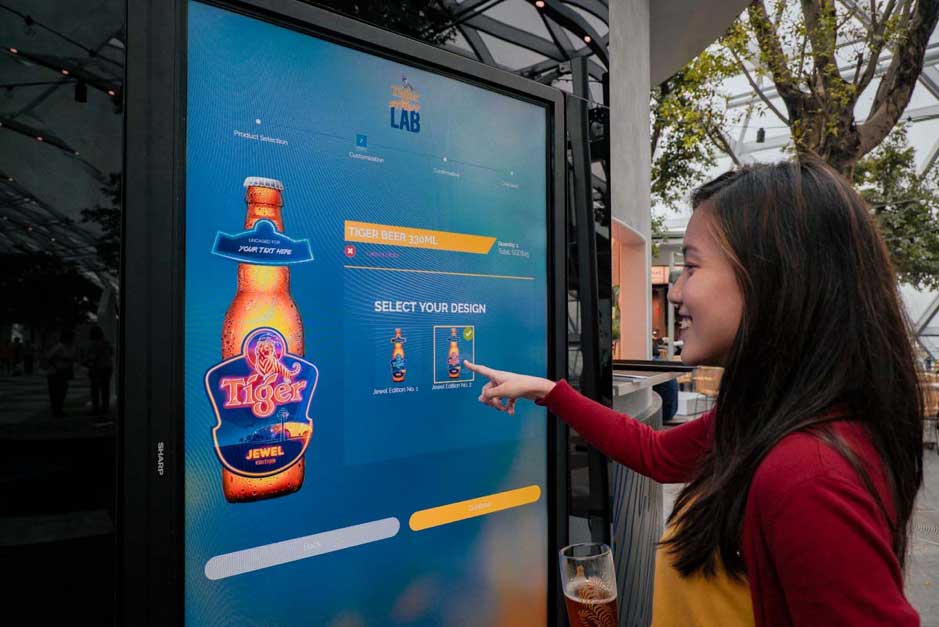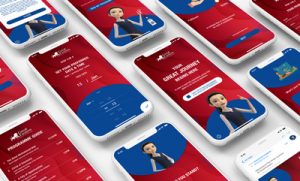Technology has become integral in our daily lives. At every period of inactivity, we tend to reach for our smartphones to browse social media, play that new mobile game everyone has been raving about or to just simply pass the time. As a result, we as human beings have grown to crave entertainment at every waking minute, at every bout of free time we have.
Studies show that, on average, our attention spans have shorten from 12 seconds in the year 2000 to 8 seconds in 2013. These findings are related to our smartphone habits that cause our attention spans to dwindle. When we come across something that does not immediately pique our interest, we lose our curiosity in a matter of seconds.
This can be detrimental to a business that wants to garner attention from their audience, but lacks excitement in their methods to do so. An ordinary advert elaborating upon a product and its uses will generally sound boring, especially if another product with the same functionality is available or there is a lack of substantial benefits for the consumer. With shortening attention spans, it becomes harder to grasp the attention of consumers.
In respect to the increasing difficulty of engaging customers, one way of retaining attention would be edutainment.
What is Edutainment?
(source: rawpixel.com)
Edutainment is the combination of the words “education” and “entertainment”. It conflates the 2 concepts to create an educational platform that is also entertaining to its audience.
Conventional methods of education involve a speaker giving a talk on a particular subject. Due to the mundane nature of this format, audiences tend to tune out and stop listening to what is being said. To counteract this problem, speakers like to engage the audience by asking questions or showing videos to retain their attention. In essence, that is edutainment.
The act of trying to amuse or entertain your target audience, but deliver important information at the same time, is a widespread technique that many companies employ to attract consumers. In fact, the reason why the term “Edutainment” was created is due to the surge in utilisation of its fundamental concept that has positive effects on learning and getting information internalised into your consumer.
Leveraging Technology with Edutainment

While simply adding a video to your presentation is considered edutainment, its potential is vast and can be used in a variety of ways.
Technology has become a staple in many of our lives. From laptops to tablets to smartphones, we frequently use technology to carry out daily activities at work or at home. This technological progress has the potential to change educating a person on bland topics into an engaging journey that is fun and sustains the user’s interest in subsequent sessions.
Due to the basic entertainment value technology provides, it is easy to incorporate education with it to create an edutainment experience. Navigating a screen with brightly coloured buttons and an aesthetically pleasing design already attracts considerable attention. If we insert educational messages into an interactive digital game, it massively increases the engagement rate of the users.
Games are a great way of eliciting attention from someone. If a game is enjoyable, it will keep the player invested and grab their fullest attention. Meaning that they are more likely to take in information that is scattered throughout the gaming process. Companies can embed their own messages or advertise new products to further their business objectives through these games.
Briefly put, digital technology has evolved significantly and should be utilised as an advantage to a company’s business model.
Edutainment’s Value in a Business

There is a common misconception that edutainment is solely meant for educating children on elementary curriculum. However, the fundamentals of edutainment can, and have been, applied in a myriad of situations – such as informing new employees of safety regulations and marketing a product to consumers.
Edutainment has proven its effectiveness in the past. Looking at statistics, the Asia Pacific Edutainment market is valued at US$756.9 million in 2018. A 16.39% compound annual growth rate (CAGR) is also expected from 2017 to 2027, signalling a growing demand in the edutainment industry.
Functioning as an all-encompassing term to convey educational material, that is both interesting and entertaining, edutainment has a place in any business that seeks to inform and communicate with their customers. Educating the average consumer through interactive engagements and ecstatic visual imagery is considerably better than verbally conveying information. It keeps their attention focused on the screen and makes marketing products and services a seamless procedure.
Learning By Example

Here in Singapore, Tiger Beer launched their experiential store at Changi Jewel that allowed customers, both local and abroad, to bring a memento of their experience back with them. Through the kiosk, patrons could select a unique label exclusive to Tiger Beer at Changi Jewel along with their name or any message they wish to imprint. A bottle with their design will be given – hence creating their own uniquely imagined bottle.

Trinax curated a Q&A redemption kiosk for visitors to learn more about cybersecurity – with an incentive. Users could have as many attempts as they wished; once they have answered all questions correctly, a prize will be awarded for their valiant efforts. Being interactive, the usage of a Q&A kiosk plays a big role in attracting the public to participate. Attaching a prize to the achievement of answering questions correctly also encourages them to memorise the helpful cybersecurity tips, thus achieving CSA’s goal for this campaign.

Colgate in Hong Kong initiated a campaign to educate the public on dental care. Their goal was to pass on a simple method of discovering if you had bleeding gums. When a single HK$ is inserted, a green apple, toothpaste and a leaflet are dispensed. The leaflet communicated that when taking a bite out of a green apple, if blood is seen on the surface of the apple, it is an indicator of bleeding gums. Colgate’s campaign not only educated the public on bleeding gums, it also did so in a manner that was interactive and memorable to ensure that the users remember this piece of valuable dental information.
(STC’s game about Killer Litter, by Trinax)
Trinax was asked to develop a game to raise awareness for Killer Litter: the act of causing objects to fall from high rise buildings that could harm an individual. Collaborating with Sembawang Town Council, we wanted to let the public know of the dangers and consequences of such irresponsible behaviour. This was done through the objective and mechanics of the game as well as in-game tips.
The goal was to avoid falling objects from a housing flat that would damage the playable character; power-ups like helmets were available that protected the player from obstacles. This game revealed the dangers when walking below a flat and the potential harm Killer Litter could create, dissuading users from committing the crime.
The Pinnacle of Education

As technology evolves, so can education. Most companies wish to attain the image of being a modern and futureproof company, immune to any changes that might occur in the coming years. By revamping their business model with edutainment, this will provide consumers a sense of assurance that the company will strive to keep up with trends and never falter when faced with an everchanging business landscape.
Businesses should seek to revolutionise the way they disseminate information to its employees and consumers by leveraging the existing technologies we have today. With media like games and interactive content, there are many tech-savvy approaches a business can leverage to engage the public and convey information.
Gone are the days of dull verbalisation in hopes of bringing the message across. Instead, we should take advantage of the technological revolution of this decade to transform the way we communicate with our target audience – through edutainment.








